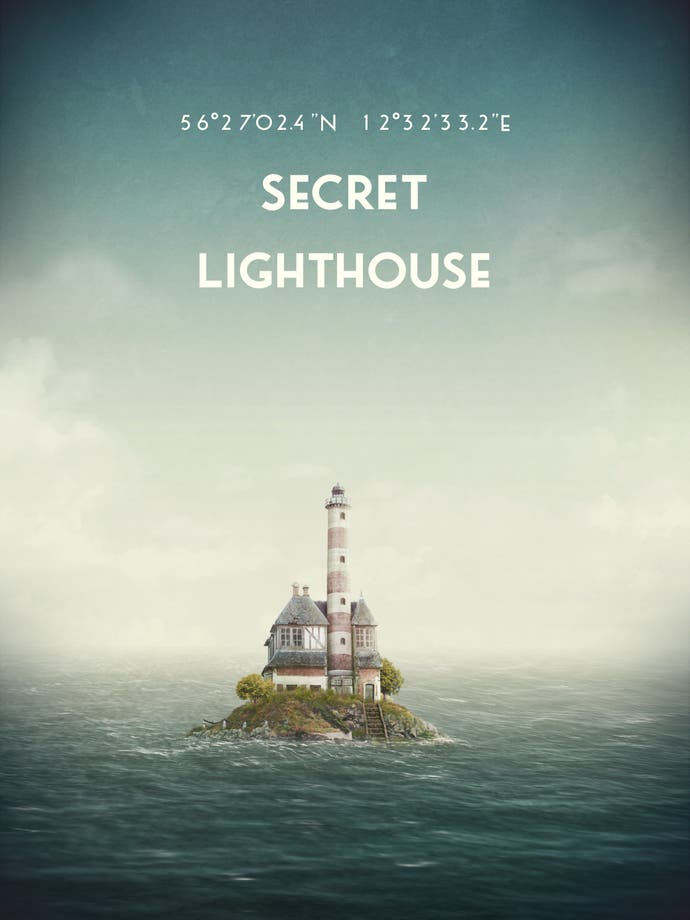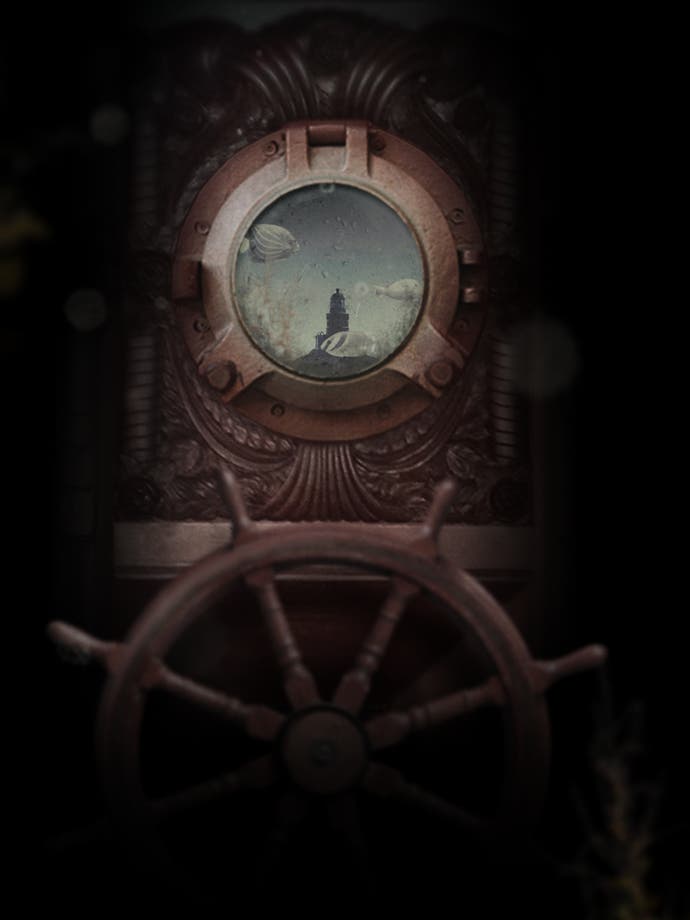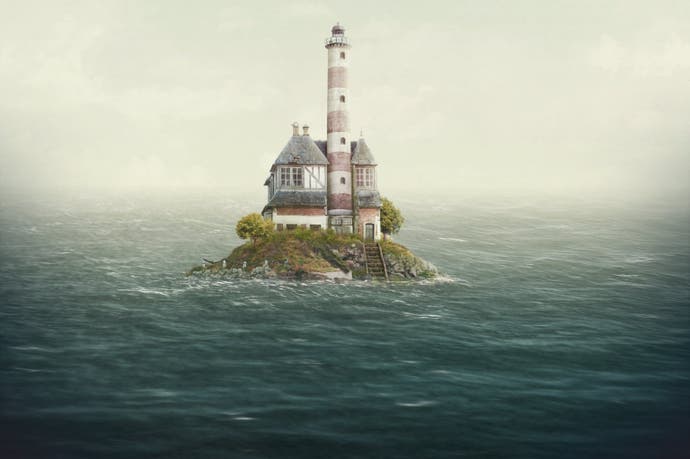Games of 2014: The Sailor's Dream
Merrily, merrily, merrily...
Lots of games are about wanting, but few are about longing. Typical game design dangles a series of carrots out in front of you in the form of experience points, new weapons, unlockable levels and so on and so forth. But The Sailor's Dream is different. It doesn't want you to get everything. It also doesn't want to hold anything back behind arbitrary barriers. It wants you to take your time and unearth all its content at your leisure. And chances are when you do, you'll still be left yearning for more. The Sailor's Dream is a window that you open, not a door that you shut.

Many people won't like Swedish developer Simogo's latest and it's easy to understand why. It's advertised as a game, but it's really a visual novel. Well, actually, it's more of a visual short story. Simogo's been heading in this direction for its last few games with Year Walk being a puzzle adventure, then Device 6 being a visual novel of sorts with a handful of puzzles that tied into its labyrinthine plot, and now The Sailor's Dream has all but eschewed that entirely (with a couple minor exceptions, but more on that later). Even Dear Esther had some procedurally-generated narration, while The Sailor's Dream is a far more closed system with its interactivity limited to scrolling through images accompanied by sound effects and the non-linear order in which you pick up the pieces.
Even as a visual novel, The Sailor's Dream is certainly divisive. Because of its non-linear format where you assemble the story by observing environments and reading passages, it's easy to think that it's supposed to be a mystery. And in its first act it definitely is. But no matter how you go about picking up the pieces, chances are you'll form a reasonably solid idea of the core plot relatively early on. But what's wrong with that?
It seems games have conditioned us to think that there's got to be a third-act twist or more complex tale in the works, but plot is only a small part of prose and The Sailor's Dream is more concerned with the finer details. I've heard some criticise its narrative for being too quaint while others have complained that its tale is too vague, where it completely skips over major characters' backstories. In this way I'm reminded of a Hemingway short story where dialogue is kept to a few lines, actions are as subtle as they come, and physical descriptions are bewilderingly enigmatic. You're left to interpret the rest in whichever way your silly mind heads in, just as we're likely to daydream when staring at the sea.
This emphasis on personal interpretation without any conventional game mechanics has previously been mockingly dubbed a "walking simulator," but The Sailor's Dream eludes even this definition. On a literal level you're sailing, not walking, but more importantly, there's nothing about The Sailor's Dream that could interpreted as a "simulator." Not only is the tone more surreal than that of real life, but it's one of the only games I've played where you don't even inhabit a character.
Typically video games cast you in a role as Gone Home did with Kaitlin Greenbriar and Thirty Flights of Loving did with Citizen Abel. That, or they let you be yourself, but tie it into the narrative in a fourth wall-breaking manner like in Myst or Contact where you're simply the stranger who's arrived to do good things. But The Sailor's Dream doesn't even do that. You don't play as a person, a ghost, or even an interloper. Instead, it's a distant third-person where you're simply the audience. It's passive storytelling for sure, but so what? The sea is a harsh mistress and sometimes all you can do it plunder its mysteries rather than conquer its roar.
It's not perfect though, and there is one key design decision that I'm not sure pays off, but is sort of brilliant in its own maddening way. It's impossible to describe without spoiling the couple of puzzles Simogo throws our way - though these are easy by design so it's not a huge spoiler. But if you want to go in fresh, skip the next three paragraphs.
There are two fourth wall-breaking elements in the game that are tied to your mobile device's clock. One of these is a radio broadcasting room where you can receive a new message every hour, on the hour. Some may argue that you're intended to check back on this over the course of a few days until you intercept all 12 transmissions, but chances are you're going to tinker with your system's date and time settings. The problem with the former is that the game's prose won't be that fresh in your memory by the time you hear the messages, while the latter approach is simply a chore that takes you quite literally out of the game.

Even if you change the time to 59 past, you'll still have to wait a full 60 seconds between each transmission as you break the immersion to fiddle with your hardware. In short: it isn't fun and ends up being a rather tedious way to putter through the epilogue.
And yet, I completely understand why it was done this way. You're listening to the thoughts of a heartbroken old man searching for his lost love. As such, you're supposed to feel impatient. You're supposed to feel restless. That makes the few second warning that a new transmission is incoming all that much more exciting. It's a clever concept, in theory, but perhaps one that's too clever for it's own good?
No matter. The Sailor's Dream is ultimately an atmosphere piece. In many ways, it isn't actually about sailing at all. It's about the dream of sailing. It's no more about life on the high seas as Pirates of the Caribbean is about pirates. The famous Disney attraction doesn't even attempt to teach its passengers about the actual history of piracy; instead it's about the myth of pirates. The burning European villas, the cool misty air, the drunken scallywags, the jolly skeletons, the slurred sea shanties and disturbingly politically incorrect sexism. It's not a world you'd actually want to live in (I for one prefer not to base my fortitude on who's best in a duel and whether a dog will wander towards my cell key-in-mouth), but it's wondrous to gaze at from at a distance as you bob along its current.
The Sailor's Dream likewise only provides us with the faintest glimpse of its exotic locales. It lets us peer into strange ruins and derelict cottages, but only lets us view a handful of images from each island. Life at sea is likewise kept at arm's reach, where all we bare witness to is a scant few docking points as we spin around the hub and decide on a destination. Instead, this more adventurous life is left to a small series of text passages and radio broadcasts while our mind fills in the details. As such, The Sailor's Dream is only partially about its small cast and the events in their lives, but it's really about the sound of seagulls, a waterlogged cottage, a girl playing by a lighthouse, a series of songs preciously transported in bottles, and an aging canine rocking about the bellows with a story to tell but no language to tell it in. It's as evocative a glimpse into a fantasy world as I've ever seen, even if it's never overtly magical. Some may find The Sailor's Dream too slight and hazy, but it leaves you wanting with one burning question in your head: What else is out there?


